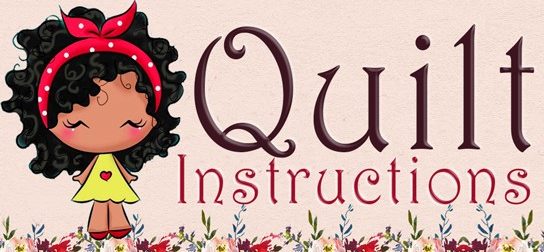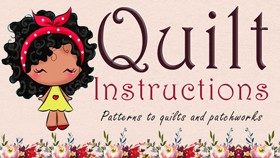Turnabout Classic & Vintage Quilt Block is a delightful fusion of timeless quilting tradition and contemporary creativity. This collection offers a vibrant array of quilt blocks that seamlessly blend classic patterns with a modern twist. Dive into the world of quilting history and innovation with these captivating designs
- Advertising-
Turnabout Classic & Vintage Quilt Block

- Advertising-
The turnabout quilt block is a versatile classic design that has been a staple of traditional American quiltmaking for generations. Easily recognized by its four patchwork squares arranged in a spinning, pinwheel-like pattern, this graphic block emerged during the late 19th century but has endured over time thanks to its striking visual impact and simplicity of construction.
History and Origins Turnabout Classic
Though the exact origins of the pattern are unknown, turnabout blocks began appearing in quilts toward the latter decades of the 1800s. As patchwork quilting expanded across America, innovative designs arose that went beyond basic squares and rectangles. The kinetic, spiraling look of the turnabout block exemplified this evolution toward more complex geometrics. Some key early designers who popularized the pattern were Caroline Willard Baldwin, Susannah Valentine and Marie Webster, founders of the Colonial Revival movement that repopularized antique quilt styles. Their patterns and publications in ladies’ magazines spread templates for turnabout blocks far and wide.
Celestial Blooms quilt pattern free
The block’s captivating name reflects its defining structure—four patchwork squares seem to spin and “turn about” when set together in the whirling, pinwheel formation. This sense of motion gives the block great visual drama and interest. While many variations exist, the classic turnabout is composed of four matching square patches, often in a light/dark contrast, that are pieced into a rotating pattern sharing a common corner.
Main Characteristics and Attributes
The Turnabout Classic basic architecture uses four identical fabric patches, most commonly squares, assembled to create the impression of twisting motion. When multiple blocks are pieced together in an alternating, cyclical design, a mesmerizing secondary pattern emerges—this is part of the great appeal of turnabout blocks. While squares are typical, creative quilters have incorporated a wide range of fabrics and shapes, including triangles, rectangles and hexagons arranged in the turnabout’s spinning four-patch arrangement.
Contrast is an important aesthetic component of the Turnabout Classic block. The four patches typically utilize contrasting values, colors or prints to increase the sense of rotation and dimension. Dark/light pairing is common, but complementary or analogous colors can be used to form vibrant pinwheel patterns. Printed fabrics are often chosen in progressive scale, with larger designs on the outer patches, to heighten the spinning effect. When multiplied in a quilt, the blocks can be arranged to produce captivating combinations of colors and patterns as they align and move across the quilt.
Tips and Instructions for Sewing Turnabout Blocks
While relatively simple in structure, precise cutting, piecing and pressing is important for producing crisp, consistent turnabout blocks. Here are some best practices to employ:
Fabric and Color Selection
Choosing dynamic light/dark pairings or fabrics in clear contrast is the first step to creating an impactful Turnabout Classic block. Solid colors or small, minimalistic prints often work best to maintain the clarity of the pinwheel design. Think about value contrast first, then opt for colors that complement or pop against each other. Warm and cool pairings, analogous colors, and monochromatic gradations can all be striking. For a more unified or scrappy look, use multiple different fabrics that share a common color tone.
Cutting and Piecing the Block
Begin by cutting all fabric patches to the precise same size, e.g. 5 inch squares. Pay attention to grainline and use an accurate cutting mat, clear acrylic ruler and rotary cutter. Locate the diagonal of each square, connecting opposite corners. Place two squares right sides together, aligning them along this diagonal line. Sew a 1/4 inch seam along the diagonal. Repeat with the other squares. Press seams to one side.
Now take one sewn pair and position it perpendicular to the other pair, with right sides facing. The points of the triangles will align at the center. Pin the pairs together, then sew a 1/4 inch seam around this center intersection to join them. Press seam allowances outward to complete the basic turnabout block. Check that each patch square measures the same; trim down any uneven edges for visual consistency. Your vivid pinwheel pattern is now ready to set into a stunning quilt!
Setting Turnabout Classic in a Quilt Design
Turnabout blocks come alive when multiplied and arranged in syncopating rows or grids in a quilt top. Blocks can be set on point (placed diagonally in alternating diagonals) to form star and zigzag secondary designs. Setting blocks in straight rows produces a mesmerizing sense of twisting motion across the surface of the quilt. Blocks usually finish between 5-8 inches square for ideal proportions in bed quilt designs.
Sashing, neutral background fabrics or lattice work can beautifully frame and separate the blocks while allowing the spiraling pattern to stand out. Simple borders and a solid fabric backing keep the emphasis on the kinetic blocks. While turnabouts are often combined with plain blocks or sashing for contrast, all-over turnabout quilts can have dramatic graphic power. Whether used minimally or in dynamic abundance, turnabout blocks deliver stunning style and visual intrigue.
The Enduring Popularity of Turnabout Quilt Blocks
The kinetic vibrancy and strong geometric forms of the turnabout block help explain its longevity as a quilting favorite. Turnabout patterns have graced American quilts for over a century and remain a staple today due to their enduring aesthetic power.
Visual Interest and Versatility
The mesmerizing pinwheel effect created by the four spinning patches gives the turnabout block an optically captivating quality no matter the color or fabric used. The motion implied in the structure adds a lively dimension that draws the eye and creates illusory depth. This intrinsic visual power means turnabouts can be incorporated into both traditional and modern quilt designs for dynamic impact. The blocks are incredibly versatile—they can be set in straight or diagonal grids, framed by sashing, layered in concentric circles or tessellated across quilt tops for transfixing optical effects.
Traditional Yet Timeless Style
While emblematic of traditional patchwork, the kinetic geometry of turnabout blocks translates beautifully into contemporary fabric choices and quilt designs. Turnabout’s strong graphic qualities and colorplay align well with minimalist modern aesthetics. The block’s legacy origins give it an inherent heirloom appeal, but it continues looking fresh by adapting to the times. PATTERN BY Fatquartershop.com
Today’s quilters keep the turnabout current by fusing it with modern fabric palettes, unconventional color pairings, asymmetry and graphic negative space. This winning combination of nostalgic charm and modern adaptability helps the turnabout block endure as a quilting staple.PATTERN TUTORIAL
- Advertising-




